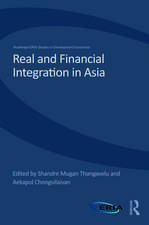The Impact of Geographic Deregulation on the American Banking Industry
Autor Ann B. Matasar, Joseph N. Heineyen Limba Engleză Hardback – 29 mar 2002 – vârsta până la 17 ani
Preț: 437.75 lei
Preț vechi: 604.19 lei
-28% Nou
Puncte Express: 657
Preț estimativ în valută:
83.77€ • 87.14$ • 69.16£
83.77€ • 87.14$ • 69.16£
Carte tipărită la comandă
Livrare economică 14-28 aprilie
Preluare comenzi: 021 569.72.76
Specificații
ISBN-13: 9781567203509
ISBN-10: 1567203507
Pagini: 216
Dimensiuni: 156 x 235 x 22 mm
Greutate: 0.52 kg
Ediția:New.
Editura: Bloomsbury Publishing
Colecția Praeger
Locul publicării:New York, United States
ISBN-10: 1567203507
Pagini: 216
Dimensiuni: 156 x 235 x 22 mm
Greutate: 0.52 kg
Ediția:New.
Editura: Bloomsbury Publishing
Colecția Praeger
Locul publicării:New York, United States
Notă biografică
ANN B. MATASAR is Amoco Distinguished Professor of International Business at the Walter E. Heller College of Business Administration, Roosevelt University, in Chicago.JOSEPH N. HEINEY is Professor of Economics in the Center for Business and Economics at Elmhurst College in Elmhurst, Illinois. He previously held the positions of Director of the Center for Business and Economics, and Coleman Foundation Distinguished Chair of Business.
Cuprins
PrefaceIntroductionThe Economic and Financial Health of America's Banks: The Effects of Consolidation on the Private SectorThe Public Effects of Interstate Banking Expansion: The Impact on Bank CustomersThe Public Effects of Interstate Banking Expansion: The Impact on EmployeesA Micro Analysis: Case StudiesSummaryAppendix 1: Banks by Asset Size: 1990-1998Appendix 2: Aggregate Condition and Income DataAppendix 3: Performance RatiosAppendix 4: Condition RatiosAppendix 5: McFadden-Pepper Act of 1927Appendix 6: Riegle-Neal Interstate Banking and Branching Efficiency Act of 1994BibliographyIndex















